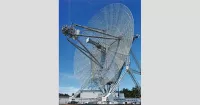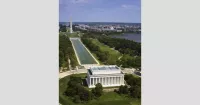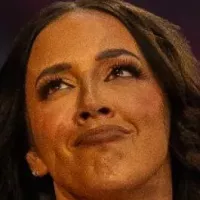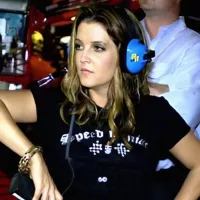The Tesla Model S is an all-electric, four-door, full-size car manufactured by Tesla since 2012. As Tesla's second vehicle and longest-running model, it has been lauded as a highly significant and influential electric car. It is known for its performance, range, and advanced technology, setting a benchmark for the electric vehicle industry.
January 2007: Tesla Opens Facility in Michigan for New Projects
In January 2007, Tesla Motors opened a facility in Michigan to work on new projects, including a four-door sedan known as WhiteStar.
2007: Musk Appoints Henrik Fisker as Lead Designer
In 2007, Elon Musk appointed Henrik Fisker as the lead designer of the WhiteStar project, contracting him to design a sleek, four-door sedan.
2007: Tesla Begins Model S Development
In 2007, Tesla began developing the Model S under the codename WhiteStar.
August 2008: Franz von Holzhausen Appointed Lead Designer
In August 2008, Franz von Holzhausen was appointed as the lead designer for the Model S project and he designed the production Model S's exterior within three months.
September 2008: Tesla Announces Exclusive Battery-Electric Vehicle Production
In September 2008, Tesla CEO Elon Musk announced at the GoingGreen conference that the company would exclusively produce battery-electric vehicles.
November 2008: Fisker Wins Lawsuit Against Tesla
In November 2008, Henrik Fisker won a lawsuit against Tesla, with an arbitrator ordering Tesla to reimburse Fisker's legal fees and declaring Tesla's claims without merit.
2008: Von Holzhausen Designs Model S Exterior
In 2008, Franz von Holzhausen designed the exterior of what would become the production Model S.
March 2009: Tesla Unveils Model S Prototype
In March 2009, Tesla unveiled a prototype of the Model S in Hawthorne, California.
March 26, 2009: Tesla Debuts Model S Prototype in California
On March 26, 2009, Tesla debuted a prototype version of the Model S in Hawthorne, California.
2009: Target completion date for Model S designs
Tesla requested Henrik Fisker that the designs for a "sleek, four-door sedan" be ready between late 2009 and early 2010.
April 2010: Toyota and Tesla Announce Partnership
In April 2010, Toyota and Tesla announced a partnership and the transfer of the NUMMI factory, with Tesla purchasing a significant portion of the facility.
2010: Target completion date for Model S designs
Tesla requested Henrik Fisker that the designs for a "sleek, four-door sedan" be ready between late 2009 and early 2010.
June 2012: Series Manufacture of Tesla Model S Begins
In June 2012, series manufacture of the Model S officially began at the Tesla Fremont Factory.
June 2012: Model S Production Begins in Fremont
The Model S has been produced at the Fremont, California, facility since June 2012.
June 22, 2012: First Production Model S Rolls Off the Line
On June 22, 2012, Tesla invited its employees, select customers, and the press to watch the first production Model S roll off the manufacturing line in Fremont.
October 31, 2012: 1,000th Model S Built
Tesla built its 1,000th Model S by October 31, 2012.
2012: Battery Pack Configurations Offered
Beginning in 2012, three battery pack configurations of the Model S were offered as 2013 model year vehicles.
2012: Tesla Model S Production Begins
In 2012, Tesla started producing the Model S, a battery-electric, four-door full-size car. The Model S has been recognized as a significant and influential electric car.
2012: Model S Named Best Invention and Tech Car of the Year
In 2012, the Model S was named one of the Best 25 Inventions of the Year by Time and received the Tech Car of the Year award from CNET.
2012: Start of Model S production period recalled for Takata airbags
In January 20, 2017, Tesla recalled every Model S manufactured from 2012 due to defective Takata airbags. This recall also affected approximately 652,000 other vehicles from other automakers across the United States.
2012: Supercharger Network Launched
In late 2012, Tesla began operating a network of 480-volt charging stations, dubbed Superchargers.
May 10, 2013: Start of Model S production period with seat back alignment issues
May 10, 2013, marks the start of the manufacturing period for Model S vehicles that were later recalled due to improper seat back alignment, which Tesla recalled on June 14, 2013.
June 8, 2013: End of Model S production period with seat back alignment issues
June 8, 2013, marks the end of the manufacturing period for Model S vehicles that were later recalled due to improper seat back alignment, which Tesla recalled on June 14, 2013.
June 14, 2013: Recall of Model S due to seat back alignment issue
On June 14, 2013, Tesla recalled Model S vehicles manufactured between May 10, 2013, and June 8, 2013, because of improper alignment of the left hand seat back striker to the bracket, potentially weakening the weld.
August 2013: European Assembly in Tilburg Begins
From August 2013, for European countries, final assembly was carried out at Tesla's facilities in Tilburg, the Netherlands.
September 2013: European Retail Deliveries Begin
European retail deliveries of the Tesla Model S began between August and September 2013, with Norway, Switzerland, the Netherlands, Belgium, France, and Germany.
October 1, 2013: Model S fire after striking metal debris in Washington
On October 1, 2013, a Model S caught fire after striking metal debris on Washington State Route 167. The driver safely exited the vehicle. The fire was caused by a "direct impact of a large metallic object" to one of the car's battery modules.
October 24, 2013: NHTSA finds no evidence of safety defect in Model S fire incident
On October 24, 2013, the NHTSA announced that it found no evidence suggesting the Model S fire resulted from a vehicle safety defect or noncompliance with federal safety standards.
November 6, 2013: Another Model S fire incident after striking a tow hitch
On November 6, 2013, another fire occurred when a Tesla Model S struck a tow hitch on the road, causing damage to the underside of the vehicle. Tesla extended its warranty to cover fire damage and issued a software update to increase ground clearance.
2013: 40 kWh Model S Version Cancelled
In 2013, Tesla announced that the planned entry-level 40 kWh lithium-ion model of the Model S would not be produced.
2013: Battery Swapping Demonstration
In 2013, Tesla demonstrated a battery-swap operation that took about ninety seconds. While Tesla initially planned to make battery swapping widely available, they reportedly abandoned the idea due to a perceived lack of customer interest.
2013: Tesla Begins Final Assembly in Tilburg
In 2013, Tesla started final assembly for European markets at its facilities in Tilburg, the Netherlands.
2013: First Fire Incident of a Model S
In 2013, the Tesla Model S was the subject of multiple fires, the first occurring in 2013.
January 2014: Recall of Model S due to overheating risk during charging
In early January 2014, Tesla issued a recall for Model S vehicles from 2013 because of the risk of overheating with the adapter, cord, or wall outlet during charging. Nearly all adapters were updated via over-the-air software.

February 2014: Fire incident involving parked Model S in Toronto, Canada
In early February 2014, a fire incident was reported in Toronto, Canada, involving a Model S parked in a garage. The car was not charging, and the cause of the fire remains undetermined, but Tesla confirmed it did not originate from the battery or charging system.
March 28, 2014: NHTSA closes evaluation of Model S undercarriage strike risks
On March 28, 2014, the NHTSA closed its preliminary evaluation of undercarriage strike risks on 2013 Tesla Model S vehicles, stating that Tesla's revisions to ride height and underbody protection should reduce fire risk.
April 22, 2014: Deliveries to Mainland China Begin
Deliveries of the Tesla Model S to the mainland Chinese market began on April 22, 2014.
June 2014: Deliveries to the United Kingdom Begin
Deliveries of the Tesla Model S to the United Kingdom began in June 2014.
July 2014: Deliveries to Hong Kong Begin
Deliveries of the Tesla Model S to Hong Kong began in July 2014.
September 2014: Autopilot Hardware Introduction
In September 2014, every Model S produced included the Autopilot hardware.
December 9, 2014: First Australian Delivery
The first Australian delivery of the Tesla Model S took place in Sydney on December 9, 2014.
2014: Tesla Replaces P85 with P85D
In 2014, Tesla discontinued the P85 Model S, replacing it with the P85D, which featured a dual-motor, all-wheel-drive powertrain.
2014: Model S Described as a "Car that Changed the World"
In 2014, The Daily Telegraph described the Model S as a "car that changed the world".
2014: Recognition of Model S as an influential electric car
In 2014, the Model S was recognized by critics as an influential electric car. It was described as potentially the last chance for electric vehicles to persuade people to switch from petrol and praised as a car that changed the world.
2014: Drag Coefficient Claim Verified
In middle of 2014, the Tesla Model S's claimed drag coefficient of 0.24, the lowest of any production car at release, was independently verified by the magazine Car and Driver.
2014: 2014 Model S fire during unsupervised supercharging in Norway in 2016
On January 1, 2016, a 2014 Model S caught fire in Norway while supercharging unsupervised. The vehicle was destroyed, and an investigation concluded that the fire started within the car, but the exact cause was undetermined.
October 2015: Autopilot Software Release
In October 2015, Tesla officially released Autopilot as a software update for the Model S. Autopilot uses cameras, radar and ultrasound to detect road signs, lane markings, obstacles, pedestrians, cyclists, motorcyclists, traffic lights, and other vehicles.
November 20, 2015: Voluntary recall of Model S vehicles to check front seat belt assemblies
On November 20, 2015, Tesla announced a voluntary recall of all 90,000 Model S vehicles to check for a potential defect in the front seat belt assemblies, prompted by a customer report in Europe.
2015: Lifecycle CO2 Emissions Study
A 2015 study by the Union of Concerned Scientists (UCS) concluded that over their lifecycle, electric vehicles—like the Model S—emit about half as much CO2 as comparable fossil fuel cars.
2015: Tesla Autopilot Introduction
In 2015, Tesla Autopilot, a partial vehicle automation advanced driver-assistance system, was released for the Model S.
2015: Tesla Launches 90D and P90D
In 2015, Tesla launched the standard 90D and the performance P90D Model S to succeed the 85 kWh model and the P85D, respectively.
2015: Model S Shares Platform with Model X
In 2015, it was noted that the Tesla Model S shares its platform and thirty percent of its parts with the Model X, a mid-size luxury crossover SUV.
2015: 70D Model Introduced
In 2015, the 70D was introduced as a model year vehicle, replacing the 60 kWh Model S. It featured dual motors.
2015: NHTSA five-star rating and Tesla's claim of 5.4 stars
In 2015, the Model S received a five-star rating in NHTSA testing. Tesla then claimed it achieved 5.4 stars based on the test details, which led the NHTSA to state that it does not award more than five stars and that Tesla was "misleading the public" with its marketing.
2015: Model S is World's Best-Selling Plug-In Electric Vehicle
In 2015, the Model S was recognized as the world's best-selling plug-in electric vehicle.
January 1, 2016: 2014 Model S fire during unsupervised supercharging in Norway
On January 1, 2016, a 2014 Model S caught fire in Norway while supercharging unsupervised. The vehicle was destroyed, and an investigation concluded that the fire started within the car, but the exact cause was undetermined.
March 2016: Tesla investigation reveals short circuit caused Norway Model S fire
In March 2016, Tesla announced that its investigation found that the January 1, 2016 fire in Norway involving a 2014 Model S was caused by a short circuit in the vehicle's distribution box, but the exact cause could not be determined due to the extent of the damage.
April 2016: Model S cars manufactured before April 2016 subject to power steering recall in 2018
All 123,000 Model S cars manufactured before April 2016 were recalled on March 30, 2018, due to excessive corrosion of the bolts which secure the power steering, particularly those cars used in cold countries where roads are salted.
April 2016: Model S Facelift
In April 2016, Tesla implemented a facelift for the Model S, which was released as a 2017 model year vehicle. The most prominent update was to its front fascia, where the previous black grille was replaced with a body continuation.
2016: Model S Undergoes Updates in 2016
In 2016, the Tesla Model S underwent several updates, including modifications to the motor, revised exterior elements, and refreshed interior features.
2016: P100D Introduction
In late 2016, Tesla introduced the P100D as a replacement for the P90D. The P100D's motors generate a combined output 510 kilowatts (680 hp) and 1,072 newton-meters (791 lb⋅ft), allowing it to have a range of 315 miles (507 km).
January 2017: Gigafactory Nevada Battery Production
Since January 2017, the Model S's batteries have also been produced at Gigafactory Nevada.
January 20, 2017: Recall of Model S due to defective Takata airbags
On January 20, 2017, Tesla recalled every Model S manufactured from 2012 due to defective Takata airbags, affecting 652,000 other vehicles from various automakers across the United States.
March 2017: 60 kWh Model Discontinuation
In March 2017, Tesla discontinued the 60 kWh model to distinguish its premium cars from cheaper options, making the 75 kWh model the new entry-level offering.
April 20, 2017: Worldwide recall of Model S and Model X due to faulty parking brakes
On April 20, 2017, Tesla issued a worldwide recall of 53,000 Model S and Model X vehicles sold in 2016 because of faulty parking brakes. Brembo, the supplier, covered the repair costs.
2017: Tesla Switches Exclusively to Synthetic Leather
In 2017, Tesla switched exclusively to synthetic leather for the Model S's seats and steering wheel, following a request from PETA to become the first cruelty-free automaker.
2017: Start of Model S production period recalled for latch failure issue in 2021
In December 2021, 119,009 Model S vehicles produced between 2017 and 2020 were recalled because of the possibility of latch failure allowing front hoods to open unexpectedly.
2017: Model S updates and discontinuations
In early 2017, Tesla introduced the 100D and midway through 2017, Tesla discontinued the 90D. Tesla subsequently ended production of the rear-wheel-drive 75 kWh model in late 2017.
March 30, 2018: Recall of Model S due to power steering corrosion issue
On March 30, 2018, all 123,000 Model S cars manufactured before April 2016 were recalled due to excessive corrosion of the bolts securing the power steering, particularly in cold regions. Tesla's stock dropped nearly four percent after the announcement.
December 2018: Multiple fires involving a three-month-old Model S
In December 2018, a three-month-old Model S caught fire three times, requiring firefighters to spend nearly ten hours preventing reignition.
2019: Tesla Replaced Variants
In 2019, Tesla also replaced the 75D, 100D, and P100D variants as part of the company's shift towards a revamped model range.
2019: Tesla Model S Motor Update
In 2019, Tesla replaced the alternating current induction motor in the Model S with a permanent magnet synchronous reluctance unit.
2019: Tesla Replaces Induction Motors
In 2019, Tesla replaced the induction motors in the Model S with permanent magnet synchronous reluctance units.
2019: Model S Lineup Streamlining
In 2019, Tesla streamlined the Model S lineup, replacing the 75D, 100D, and P100D models with the Standard Range, Long Range, and Performance models. The Standard Range model was later discontinued that year.
2019: Autopilot Criticism and Safety Concerns
In a 2019 survey by Bloomberg News, hundreds of Tesla owners reported experiencing dangerous behaviors with Autopilot, including phantom braking, lane departures, and failure to stop for road hazards.
2020: Battery Integration Plans Announced
In 2020, Tesla announced plans to integrate the batteries into the vehicle's body to enhance strength and reduce weight and cost.
2020: Long Range Plus Model Introduction
In 2020, the Long Range model was replaced with the Long Range Plus. Its dual motors deliver a combined output of 311 kilowatts (417 hp) and 658 newton-meters (485 lb⋅ft). It has a range of 400 miles (640 km).
2020: Model Y Release
In 2020, the Model Y was released.
2020: End of Model S production period recalled for latch failure issue in 2021
In December 2021, 119,009 Model S vehicles produced between 2017 and 2020 were recalled because of the possibility of latch failure allowing front hoods to open unexpectedly.
January 2021: Model S "Palladium" Refresh Revealed
In January 2021, Tesla revealed the updated Model S, known as the "Palladium" project, which involved an overhaul of most of its components. At its debut, the updated Model S had the lowest drag coefficient of any automobile, with a value of 0.208.
July 2021: Model S Plaid fire with electronic door system failure
In July 2021, a Model S Plaid caught fire, and its electronic door system failed, forcing the driver to push it open. The vehicle moved and erupted into a "fireball".
December 2021: Recall of Model S vehicles due to potential front hood latch failure
In December 2021, 119,009 Model S vehicles produced between 2017 and 2020 were recalled because of the possibility of latch failure allowing front hoods to open unexpectedly.
2021: Palladium Refresh - Touchscreen and Steering Wheel Updates
For the 2021 Palladium refresh, Tesla further updated the Model S's system, switching to a horizontal touchscreen orientation and an AMD Ryzen-based SoC. Also for the 2021 refresh, Tesla implemented a "yoke" steering wheel.
2021: Introduction of Tesla Vision
From 2021, Tesla began using a system known as "Tesla Vision", which relies solely on cameras, replacing the previous radar-based sensors.
2021: Tesla Ends Final Assembly in Tilburg
In 2021, Tesla ended final assembly for European markets at its facilities in Tilburg, the Netherlands.
2021: Battery Recycling Report
In 2021, Tesla wrote in its Impact Report that it recycles all returned battery packs. It stated that Gigafactory 1 can recycle up to 92 percent of the elements from old batteries, creating a "closed loop" system where old batteries are turned into new ones.
2021: Model S Undergoes Updates in 2021
In 2021, the Tesla Model S underwent several updates, including modifications to the motor, revised exterior elements, and refreshed interior features.
2021: End of Tilburg Production
The production of both the Model S and Model X at the Tilburg facility ceased in early 2021.
2022: Model S is longest-produced model
As of 2022, the Model S is Tesla's longest-produced model.
2022: Shift to LFP Batteries
By early 2022, almost half of Tesla's overall sales had shifted to a different battery type (LFP battery), which does not contain cobalt or nickel.
2022: Five-Star Safety Rating
In a European New Car Assessment Programme testing conducted in 2022, the Model S received a five-star rating.
2023: Discontinuation of Ultrasonic System
In 2023, Tesla discontinued the ultrasonic system as part of its shift towards Tesla Vision.
2023: Standard Range Reintroduction
In 2023, Tesla reintroduced the Standard Range model, which has a range of 370 miles (600 km).
2023: Price Range Adjusted for Inflation
The $50,000–$70,000 price range for the Model S in 2007 is equivalent to $75,823–$106,152 in 2023.
February 2024: Recall of Tesla vehicles due to compact warning lights on the instrument panel
In February 2024, Tesla recalled over two million Tesla vehicles in the United States because the compact size of the warning lights on the instrument panel did not meet federal safety standards, increasing the risk of collision.
July 2024: Major recall of Tesla vehicles due to hood latch software issue
In July 2024, a major recall affected approximately 1.8 million Tesla vehicles, including the Model S, because of a software issue that could prevent the detection of an unlatched hood, posing a risk of it unexpectedly opening while the vehicle was in motion.
2024: Equivalent value of facility portion purchase by Tesla
In 2010, Tesla agreed to purchase a significant portion of the facility for $42 million (equivalent $57 million in 2024).
Mentioned in this timeline

Nvidia is a technology company based in Santa Clara California...
California is a U S state on the Pacific Coast...

Radar is a radiodetermination system using radio waves to detect...

Washington D C is the capital city and federal district...
Hong Kong is a Special Administrative Region of the People's...
China officially the People's Republic of China PRC is an...
Trending

8 months ago Devin Booker and Molly Murphy spark dating rumors at Stagecoach 2025.
1 month ago Will Richard's Warriors journey: From honeymoon to clutch player, Nashville roots.
28 days ago Jalen Williams' Impact: Thunder, Warriors Matchups, Dort's Future, Injury Return

9 months ago Chelsea Green's WrestleMania 41 Absence Sparks Controversy and Creative Pitch Discussions in WWE.

1 month ago Peyton Watson's Opportunity: Millions on Nuggets Roster and Denver Breakout Potential.

Lisa Marie Presley - was an American singer-songwriter and the only child of Elvis and Priscilla Presley As the sole...
Popular

Stranger Things created by the Duffer Brothers is a popular...

XXXTentacion born Jahseh Dwayne Ricardo Onfroy was a controversial yet...

Kelsey Grammer is an accomplished American actor producer and singer...

Candace Owens is an American conservative political commentator and author...
Turning Point USA TPUSA is an American nonprofit organization founded...

Bernie Sanders is a prominent American politician currently serving as...
